Dear Artist,
Nigel Spivey, in his insightful book How Art Made the World, speculates on “peak shift.” It’s a concept that comes from research into both human and animal behaviour. A neurological principle, peak shift says we need exaggeration to make our lives interesting. Spivey asks, “Is it possible that a primeval instinct explains why humans like to create unrealistic images?”
Spivey cites the Venus of Willendorf, a round little female figurine that just happens to be 30,000 years old. Some anthropologists think this broad-beamed and buxom girl is the world’s oldest three-dimensional joke. Others think differently. Fashioned by someone in a harsh, ice-age environment, it’s an example of female steatopygia (fat-bottomedness) at a time when fatness and fertility might have been highly desirable. Where emaciation and hunger were the norm, fatness was the fashionable dream. With peak shift in spades, this four-inch sculpture might have excited people rather than serving as a source of mirth.
The peak shift concept also applies to animals. One of many studies investigated the actions of Herring gulls and their chicks. The chicks get their folks to regurgitate food by tapping on the red spot on the adults’ yellow beaks. When a yellow-and-red painted stick is substituted for a beak, the chicks peck at that too. When three red dots are painted on the stick — the chicks get three times as excited. Scientists wondered if making the chicks go really crazy in this way was the prospect of more food, or the extra red dots.
Here on the British Virgin Islands, my friend Bob Ogilvie and I have been painting some famous and curvaceous rocks. We’ve determined a painter has three choices: One is to get them right — make them accurate and realistic. Another is the pervasive tendency to make them less interesting than they are — muzzy them up, sand them down and minimize their form. The third, the peak shift way, is to make them even more voluptuous. It’s our conclusion that it’s generally better for artists to go for the peak shift. People don’t need to be bored with the ordinary, and they don’t want to have natural beauty nullified. Like those herring-gull chicks, people (and artists) get extra excited when things are overdone. They just can’t help it. They don’t know why. It’s a primeval instinct.
Best regards,
Robert
PS: “Human kind cannot bear very much reality.” (T.S. Eliot)
Esoterica: The instances of peak shift in art are too widespread to be dismissed as nonsense. In depictions of the human figure, Michelangelo’s over-the-top musculature, Renoir’s ample bottomization, and the distortions of El Greco, Giacometti and Modigliani give an idea of what’s to be had. Extremes of colour (and the hammered repetition of it — think herring-gulls) developing from the Impressionists, the Fauves, to the advent of colour field and colour vibration, have led to the flagrantly gaudy. Are we excited yet? Like the creator of the Venus of Willendorf, have we peak-shifted too far and gone into what others (and later generations) might think is the domain of humour?
This letter was originally published as “Peak shift” on March 23, 2007.
Have you considered a Premium Artist Listing? With each letter, an artist is featured at the bottom of this page. The Premium Artist Listings are a means of connecting artist subscribers through their work. Proceeds from each listing contribute to the production of The Painter’s Keys.
“An artist is attracted to certain kinds of form without knowing why. You adopt a position intuitively: only later do you attempt to rationalize or even justify it.” (Fernando Botero)
Featured Artist
We all need beauty, especially at a time when it appears to many that the world is in chaos.
Painting is the way I view my life, and it helps me keep my mind straight and my eyes on the positive. I look for beauty wherever I go. For that reason, I know that my life will not be long enough to paint all the ideas that I have.
I am painting because the Lord put the passion and desire in my heart to glorify Him in this way.
I have dedicated my life since 1983 to creating a body of work that testifies of His Creation, majesty, power, beauty, life and love.
Light and how we see it on the earth is the subject of all of my paintings.
I paint the landscape because I believe that we can see the Creator in His Creation, if we just look for Him there.
Since all who are sighted may see our surroundings, I believe this is one of the most evident ways we may see Him.
If I were to give a name to my entire portfolio of paintings, I would call it “The Sight of Heaven Touching Earth.”This Scripture, Romans 1:19-20, is foundational to all of my work: For what can be known about God is plain to them, because God has shown it to them. For his invisible attributes, namely, his eternal power and divine nature, have been clearly perceived, ever since the creation of the world, in the things that have been made, so they are without excuse.”
Beauty, order, and the possibility to love is all around us—all we have to do is want to see it.

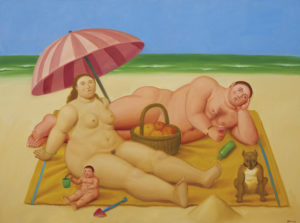
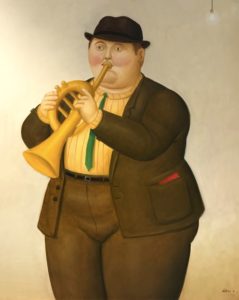
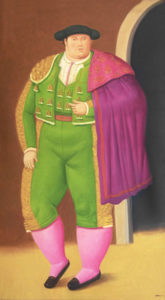
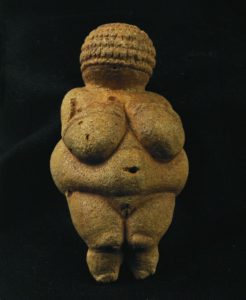
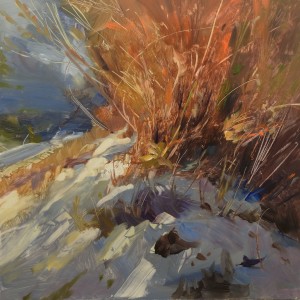



9 Comments
In my youth I did a lithograph called Venus of Mattel. I lined up the Venus of Willendorf, Venus de Milo and a Barbie doll side by side. My intention was exactly as you describe. These were my radical feminist days, and I was thinking that the Willendorf was definitely a luscious fertility symbol. The Venus de Milo was an abstraction of asexual beauty, proportions and form, not exaggerated at all. Barbie was a symbol of sex, sex, sex without reproduction in these days of overpopulation. (It was about 3 billion when I made that print in the 1980s, now it’s almost 8 billion.) Barbie’s hips are too narrow for a safe delivery of a baby, and her breasts are giant in comparison. Her feet are tiny, making her helpless, just like the Chinese tradition of binding women’s feet made them non-mobile playthings. Such a strange plaything for a pre-teen. I had my own Barbie and Ken in those days, and they had a lot of sex.
That print got a lot of attention!
Annie Cicale I love it!! As a pre-teen, I didnt even know what sex was!
Barbies a doll, so she can have babies anyway
Apparently Eliot was correct with the notion of tolerating reality.
Interesting concept, but the artists and works mentioned are outliers. Consider the many, many more that did not “peak shift.”
What can we expect when Peak Shift loses all restraint….? When a good and desirable thing renders other good and desirable things obsolete, or worse….eliminates them entirely….like hamburgers vs. rain forests….like sex vs. over population….like whaling vs. whales….like computers vs. humanity….you get the picture. Excess is unnecessary and often dangerous….but our primeval instinct mandates that more is better, even when the opposite is obvious….(think obesity) It’s often more difficult to express with simplicity….but when a succinct expression succeeds, it’s more powerful and exciting than any bombastic bottomizations.
Kardashians? …..in all things
It’s a personal conflict when painting representational works. The urge to translate forms on the canvas according to what we see, versus the urge to forget detail and form, and exaggerate and simplify. Really, the latter is easier, and oddly enough, seems to look better. I didn’t realize I was going into Peak Shift, I thought I was just fudging it and hoping it would look okay. Interesting letter, thanks, Sara!
Awesome letter!! This is sure to be a great topic of discussion with my students. Thank you!